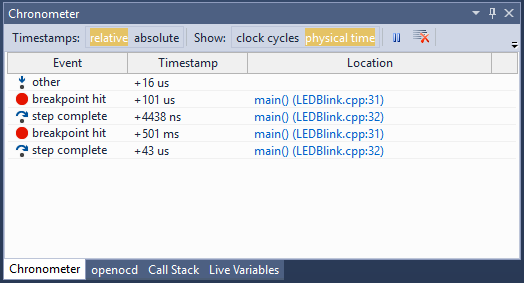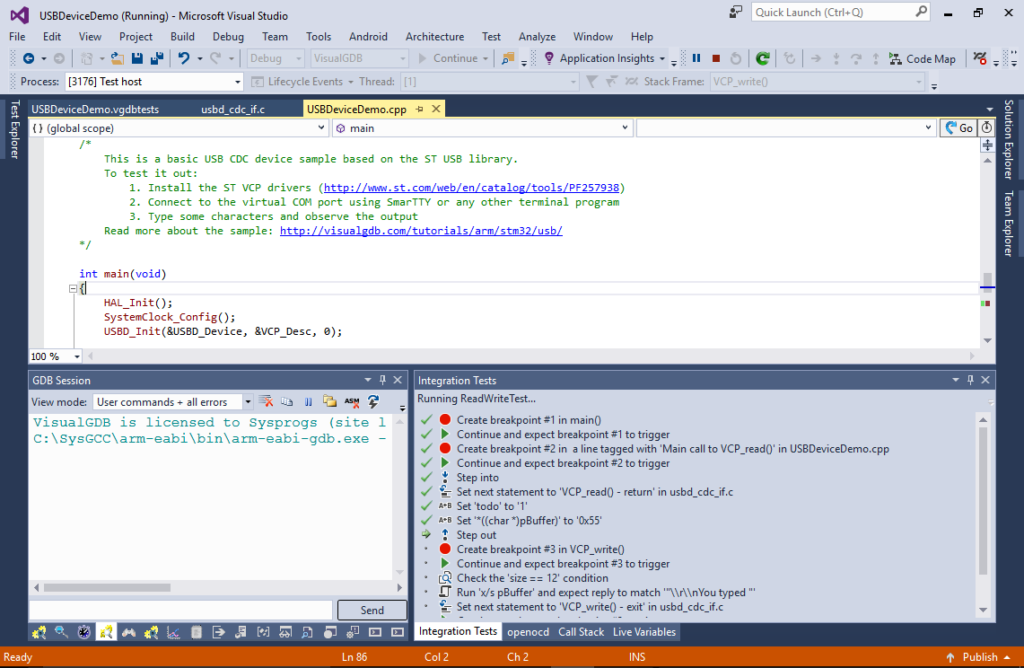Today we are proud to announce the release of VisualGDB 5.4 Preview 1. This main highlight of this preview build is the new powerful and seamless way to develop ESP32 firmware using the ESP-IDF framework – the advanced ESP-IDF Project Subystem.
Announcing VisualKernel 3.0 Beta 1
Today we are proud to announce the release of VisualKernel 3.0 Beta 1. The new release introduces a number of usability features and I will give you an overview of them in this post.
SmarTTY 3.0 is out
Today we are proud to release SmarTTY 3.0 – our free multi-tabbed SSH client. In this version we have redesigned the main window to look better on modern high resolution displays and introduced the new smart terminal mode that greatly boosts the productivity of work done over SSH by extending the normal terminal experience with a few useful graphical elements:
In this post I will give you an overview of the new features.
10 reasons to try out VisualGDB 5.3
Today we happy to announce the final release of VisualGDB 5.3. Over the past several months and 8 preview builds we have introduced and fine-tuned multiple usability-focused improvements to your cross-platform development workflow and I will give you a quick overview of them in this post.
Explaining project format changes in VisualGDB 5.3
The latest VisualGDB 5.3 release introduces a few improvements in the project format that avoid hardcoding of the paths and settings in the project files and make toolchain management on different machines easier. However some of those changes are not backward compatible with VisualGDB 5.2 and earlier, making it harder to update to v5.3 if some of the developers in your organization are still using v5.2. In this post I will show you the project file format differences between VisualGDB 5.3 and 5.2 and will provide examples on making v5.3 projects compatible with the older VisualGDB versions.
Continue reading Explaining project format changes in VisualGDB 5.3
Announcing VisualGDB 5.3 RC1
Today we are proud to announce the release of VisualGDB 5.3 Release Candidate 1. This version introduces profiling and code coverage support for Linux projects, Linux Dynamic Analysis, advanced code annotation and a few other improvements. In this post I will give you an overview of the new features:
VisualGDB 5.3 Preview 8 is out
Today we are proud to announce the release of VisualGDB 5.3 Preview 8. This build mainly focuses on stability and usability improvements, such as better integration with Kinetis KSDK 2.x and support for importing Keil projects, however it also introduces a feature that greatly simplifies and reduces the overhead of analyzing precise timing of your embedded code – Chronometer.
Introducing Embedded Integration Tests
VisualGDB started supporting unit tests in version 5.2. Having out-of-the-box support for CppUTest, GoogleTest and TinyEmbeddedTest, VisualGDB made it easy to check whether every separable component of your system works. However the size overhead and the necessity to create a separate test project makes it hard to use them for testing the behavior of the entire embedded system.
So in VisualGDB 5.3 Preview 7 we introduced a new mechanism called Embedded Integration Tests that does exactly that – lets you conveniently verify the behavior of your firmware without any significant overhead.
VisualGDB 5.3 Preview 6 Released
Today we announce the release of VisualGDB 5.3 Preview 6. It focuses on further improving the usability of the embedded and Linux projects. I will give you an overview of the highlights of this version in this post.
The Updated VisualGDB Embedded Debugging Experience
VisualGDB has a history of supporting embedded devices that has gone through several steps of evolution. The very first VisualGDB version released 5 years ago expected you to know the gdb and OpenOCD command lines, one of the next versions provided convenient GUI for locating OpenOCD scripts and settings that eventually morphed into detecting the settings for common devices and debug adapters, still requiring to go into script editing to support choosing a specific ST-Link instance or turning on the “Connect under reset”.
VisualGDB 5.3 Preview 5 replaces this experience with a much more streamlined (and powerful) UI and I will show you its main highlights in this post.
Continue reading The Updated VisualGDB Embedded Debugging Experience


